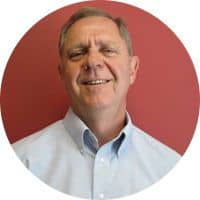Here’s a simple definition of what selling should be:
“The art and science of understanding a customer’s needs, applying your products to those needs, and convincing the customer to buy from you.”
If the role you call inside sales isn’t doing this, it’s not selling. It’s clear there is a disconnect on how inside sales is viewed across various organizations.
Businesses must have clear expectations of this role if they want to maximize growth opportunities. Here are three inside sales models that are working for distributors looking to build a more proactive role for their inside sales teams:
Inside account management model
This consists of an inside sales representative who develops and manages their own territory similar to how an outside sales rep would – but primarily through the phone. These can be categorized by the segments that are assigned to the inside sales territories:
Bottom feeders
These are the lowest revenue-producing and least profitable accounts, which are often neglected. These territories are made up of accounts that outside salespeople don’t want to spend time on. They typically don’t offer the same opportunities as other accounts. One reason they are assigned to the inside is because the cost of selling to them through an outside sales rep usually exceeds the margin. However, in some cases, it is even difficult to profitably sell to these customers through inside sales.
White space
This territory includes geographies, market segments or company types that aren’t already assigned. These are accounts that nobody calls on today. While this can be a growth strategy, it is one that typically requires patience and a long-term view before a company starts seeing a positive return on their sales investment. This is a good market-maker activity, but companies with a short-term profit objective should avoid this strategy.
Middle market
The middle market consists of accounts that may get a little bit of attention from the field reps, but not quite enough to maximize their potential. If nurtured, these accounts have an opportunity for significant growth. This can be a profitable growth strategy.
Campaign selling model
In this model, inside sales teams focus on selling products, services and product bundles through promotions and programs that include offers and specified timeframes. The campaigns have a start and end date and generate short-term sales and some profitability (when successful). Distributors don’t often get a lot of leverage from campaign selling because each call is focused not on building a relationship, but on a transaction. Campaigns continually start and stop, and customers don’t typically appreciate this approach.
An example of this was early in the pandemic when a distributor would get hand sanitizer in, and would reach out to customers to sell until it was out of stock again. These programs frequently have some benefit but are difficult to sustain over time.
Integrated sales team model
This approach pairs inside and outside sales reps, who have joint ownership of accounts. They share relationships and territories. When integrated sales teams are implemented properly, they tend to offer sustained, and in most cases double-digit, sales growth. In fact, through a test with a large multibillion-dollar distributor, we saw a 14-18% lift in sales using an integrated sales model compared with reps who did not participate.
This is frequently a distributor’s best bet to generate sustainable and profitable sales growth.
Mark Peck is the founder and former owner and CEO of Apexx Group LLC, a marketing and sales firm that focused on helping its client’s drive breakthrough revenue growth. In his 40 years of management consulting experience, he has helped hundreds of distributors grow their businesses. His sales and marketing models and programs have generated over $1B in incremental sales for his clients.

